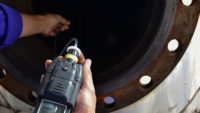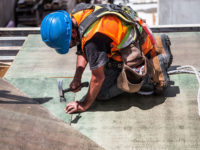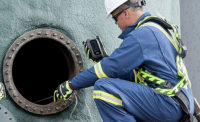Workers are required to wear respirators when occupying confined spaces containing hazardous gases and chemicals. However, the respirator will only be effective if the mask is secured over the person’s nose and mouth without any gaps between their face and the seal. Performing a respiratory fit test is the only way to ensure that the equipment is attached and working properly.
Respiratory fit testing must be done at least annually, when someone undergoes significant facial changes (due weight fluctuation, dental work, etc.), or whenever a new respirator is used that has a different size, style, model, or make. Also, if the worker doesn’t pass the fit test the first time, the test must be re-administered.
The lining of the respirator needs to create a proper seal around the person’s breathing zone to prevent hazardous gases and particles from slipping between the cracks. Since people and respirators vary in size, the equipment may not fit every employee the same way. Facial hair can also interfere with the fit of the respirator, and employees with hair on their face or neck may need to wear a hood or full face mask that wraps around their entire head.
The entire process typically lasts between 10 to 15 minutes. The worker or company can use a fit testing kit, which typically comes with everything needed to perform the test. The test requires at least two people: the worker who will use the equipment and an assistant who will administer the test gas or scent.
The worker should first put on the respirator as instructed, along with the proper cartridge or filter necessary to perform the test. The equipment should fit securely across their head or face without causing discomfort while breathing. Most respirators come with adjustable clips or bands in the back that can contract or expand based on the size of the person’s head.
The worker will then need to put on a hood on top of their respirator to create a safe, contained space where the test can be performed. The second person adds a harmless scent or order, typically bitrex (bitter taste) or saccharine (sweet taste) test solution, into the hood. Other test agents can also include isoamyl acetate (banana smell) that tests respirators with organic vapor cartridges, and irritant smoke (involuntary cough reflex) that tests respirators with level 100 particulate filters. These can come in vials (ampules) that can be used with an applicator tip that can be inserted into the opening of a nebulizer. If the worker wearing the respirator can smell the solution, they should adjust the respirator or try a different brand or size. If the worker cannot detect the scent through the respirator, they have passed the test.
Employers can make the process easier by supplying a range of respiratory protective equipment, including multiple sizes and styles, from at least three different manufacturers. This is the best way to protect workers from hazardous gases on the job. Simply wearing a respirator may not be enough. The fit test is needed to ensure the safety equipment is properly attached. Workers should have this information readily available to quickly conduct fit tests on their respirators in the field.



